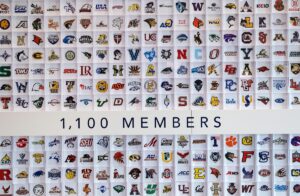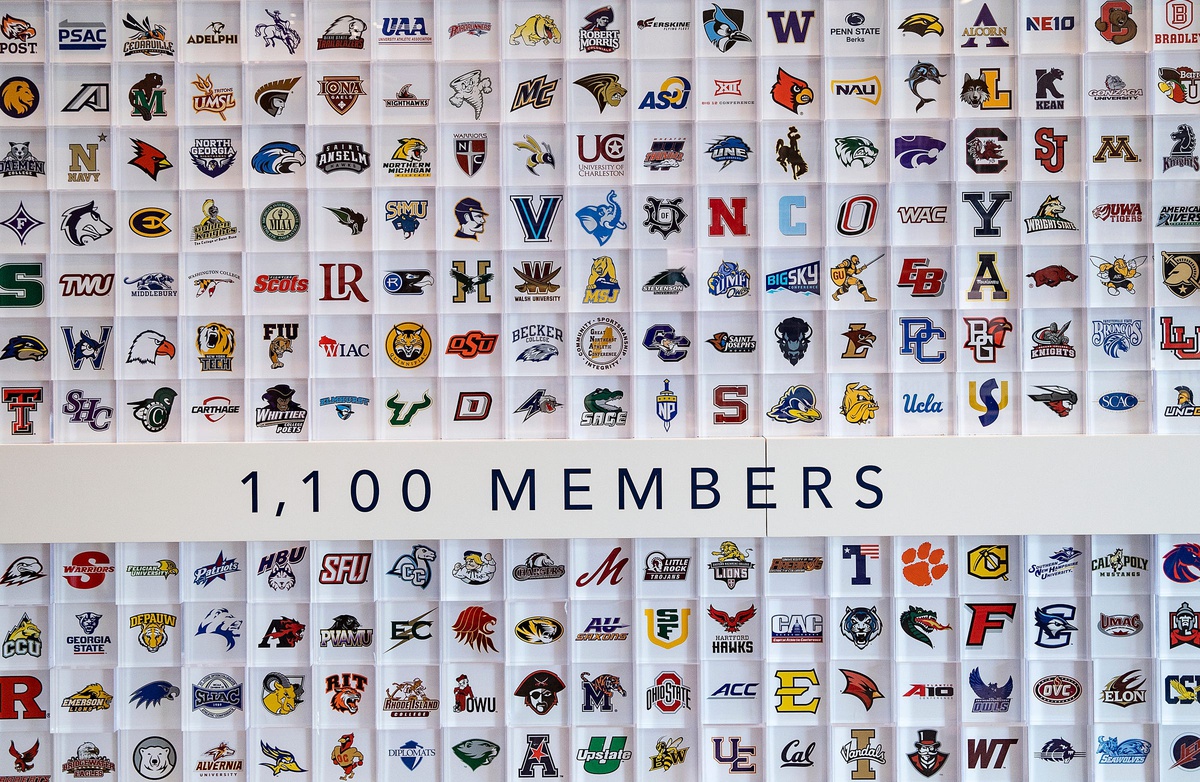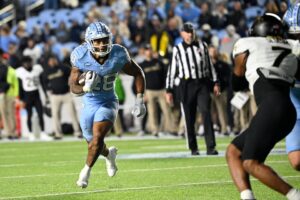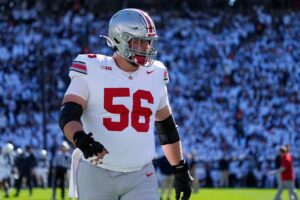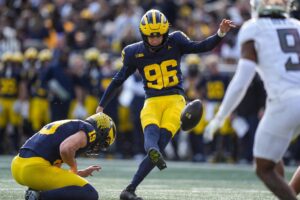Over the last few days, various news outlets revealed that each of college sports’ Power Five conferences and the NCAA have approved the terms of a proposed settlement to resolve the antitrust litigation in House v. NCAA. As we have done here at Last Word on Sports with respect to the myriad changes that have led us to this point, we now take a close look at how the settlement might impact the landscape of college athletics. In short, we seek to answer the question: what does the House settlement mean for college sports?
What Does the House Settlement Mean for College Sports?
The Terms of the Settlement
Generally, the House settlement resolves several pending antitrust lawsuits brought against the NCAA by current and former athletes. Those athletes allege that the NCAA violated federal antitrust laws by implementing and sustaining a model that imposed rules to prevent student-athletes from profiting from the use of their names, images, and likenesses. The settlement includes former student-athletes who competed in the 2016 calendar year forward.
The settlement requires the NCAA and its member conferences to pay $2.77 billion over 10 years to more than 14,000 former and current student-athletes. The NCAA will pay 40% of the settlement from its own sources, while the remaining 60% will be paid through reductions in the NCAA’s revenue distributions to its 32 Division I conferences over the next 10 years. In total, the NCAA will decrease revenue distributions to its conferences by $1.6 billion over 10 years for an average of $160 million per year. Of that figure, the Power Five conference teams (plus Notre Dame) will absorb 40% of the reduction. The Group of Five conferences will absorb 17% of the reduction, and the FCS conferences will absorb 23% of the reduction. Meanwhile, non-football Division I conferences will absorb another 20% of the reduction.
Going forward, the NCAA will allow (but not require) member schools to share revenue with student-athletes up to a cap of $20 million. The cap equals 22% of the annual revenue generated by Power Four schools, (as the Pac 12 dissolves later this Summer), and may increase or decrease as revenues fluctuate. The settlement covers a 10-year term and should generally resolve antitrust concerns specifically relating to whether student-athletes can be paid and whether the schools can pay them for the next decade after the settlement is finalized. The NCAA will also replace scholarship limits with roster size restrictions.
The Timing of the Settlement
Though the NCAA and its largest conferences approved the settlement, the terms require approval through the court process. The settlement derives from the House v NCAA class action antitrust lawsuit. The procedure for the resolution of a class action suit requires some explanation. First, counsel for the lead plaintiffs who represent the entire class of possible plaintiffs must sign off.
Second, the settlement must be presented to the presiding judge for preliminary approval. The hearing requires an initial notice giving other parties an opportunity to object. The judge reviews the terms to consider whether they appear fair. The judge also reviews the form and timing of the proposed notice to the class members. If the court approves the settlement on a preliminary basis, counsel sends notice to the members of the class. Those members have an opportunity to opt out of the class. They also have a right to object to the proposed settlement. Generally, class action settlements require at least 35 days’ notice.
Third, the court holds a hearing on the settlement after the conclusion of the opt-out and objection period. At this hearing, the court hears any objections and receives a report on the number of potential plaintiffs who opted in and opted out. Assuming the court approves the settlement at that point, there would still be an appeal period by which an objecting class member could seek review.
The parties admit that the current terms do not resolve all issues, which means the parties will negotiate a proposed settlement document over the coming weeks to fill in the formalities. In other words, nothing is final. Indeed, nothing will be final for at least four to six months. As a result, the terms of such a settlement will not change much until the 2025-26 academic year.
Could Anything Accelerate the Timing?
What does the House settlement mean for NCAA governance? Will it look to start establishing some of its new rules sooner than the effective date of the settlement? Theoretically, it could vote to allow revenue sharing up to a cap immediately. It could vote to eliminate scholarship limits now. It could craft a series of rules that govern the distribution of revenues in ways that comply with Title IX. The NCAA could also craft a series of rules that deal with NIL collectives. Other than the schools it governs, very little prevents the NCAA from accelerating the timeline.
What Does the House Settlement Mean for Revenues?
Assuming approval of the specifics, the House settlement means that all schools will face reductions in revenue beginning in 2025. For the Power Four conferences, each school will receive about $1MM less per year. For the Group of Five conferences, each school will receive about $425,000 less per year. FCS schools will receive approximately $285,000 less from the NCAA. Finally, non-football Division I schools will receive about $300,000 less per year from the NCAA.
The Power Four teams receive around $55 million per year in revenue from NCAA, conference, and media revenue shares. As a result, the reduction arguably hurts these schools the least. That said, the total revenue received by the Power Four schools falls in a greater range, with Ohio State earning a total revenue of over $250 million in 2020-21 down to Oregon State earning a total revenue of over $83 million that year. The $1 million reduction likely does not impact any of those schools very much, but the revenue-sharing cap of $20 million will be much harder for schools earning less than $100 million than schools eclipsing $200 million. The “cap” operates similarly to a salary cap so that no school can share more than the set figure with all of its student-athletes combined. Still, it creates a burden on a shifting scale.
The other NCAA conferences, however, will face a much greater burden. From the 2020-21 year, no school outside of Air Force generated revenues greater than $70 million. How those schools will adapt depends on a number of factors that we will continue to explore through a series of detailed articles.
How Will the Scholarship Changes Impact Revenues?
The scholarship limit removal arguably has more impact on revenue disparity than the revenue sharing cap. Consider this: currently, each school has a fixed number of scholarships, and schools have designed their budgets for years to account for those limits. Removing the limit in favor of a roster size cap for each sport could double the total number of scholarships for which a school must account. That alone contracts the resources available to lower-revenue schools. Even an increase of 50 scholarships a year (adding 15 to football, 15 to baseball, and 20 to the remaining sports combined) adds about $3 million to the expense side of a school’s athletic department ledger.
This means that schools will face budget crunches of $4 million (new scholarship expenses and lower revenue) from day one. That compounds the problems with which smaller-budget schools must contend once adding the revenue-sharing decisions to the mix. The NCAA, of course, will not require any school to participate. That said, when dozens of schools elect to share revenue, what meaningful choice will reluctant schools have? Unless they have a group of NIL collectives that can make up the difference, a school must pay close to the cap to compete. That means that school budgets will ultimately contract by $24 million. For those Power Four schools that operate at a current net neutral or net loss, this new reality will bring heavy consequences.
What About Title IX and Non-Revenue Sports?
What does the House settlement mean for non-revenue sports and Title IX? Ironically, the House case features a former Arizona State swimmer as one of two lead plaintiffs. With greater demands weighed against relatively flat revenues for all but the SEC and Big Ten programs, schools will face tough decisions going forward. Title IX generally requires a school to offer scholarships and other aid in an amount proportionate to the number of student-athletes of each gender. In other words, if women comprise 50% of a school’s student-athlete population, then 50% of the available scholarship aid must be allocated to women. Additionally, a school cannot offer athletic participation in a disproportionate number to either gender.
When schools start sharing revenue with student-athletes, one question arises naturally. Must those schools allocate that revenue evenly by gender, regardless of which program generates the most revenue? If they do, will participants in more visible programs advance their own complaints against the distribution model? We covered some of these problems when we first predicted the issue five years ago. We covered them again when we discussed the movement by student-athletes to become employees. The House settlement puts a new spin on an existing question.
Schools will have to carefully balance the representation that Title IX requires with their interests in cutting costs to meet potential budget shortfalls. We have little doubt that schools will be cutting non-revenue sports in the next few years. How they do so will certainly vary, and some will depend on what facilities already exist. If a school recently sank capital on an Olympic diving facility, for example, that school is not likely to cut that program.
More to Come
Simply, the House settlement means that many aspects of college athletics will evolve over the next several years. Schools must make tough decisions, and quickly. The fallout of the settlement will also impact several areas we have not yet covered. Will schools incorporate NIL collectives into their purview? Will the NCAA require that to happen? Should the NCAA more strictly regulate how NIL collectives can funnel money to players? What will happen with Group of Five schools? Will they split from the Power Four? How will this affect high school athletes and their ability to compete for available roster spots? Can schools adapt to budget constraints by involving private equity? We will examine these questions and more as part of our thorough analysis of the fallout of the House settlement.
